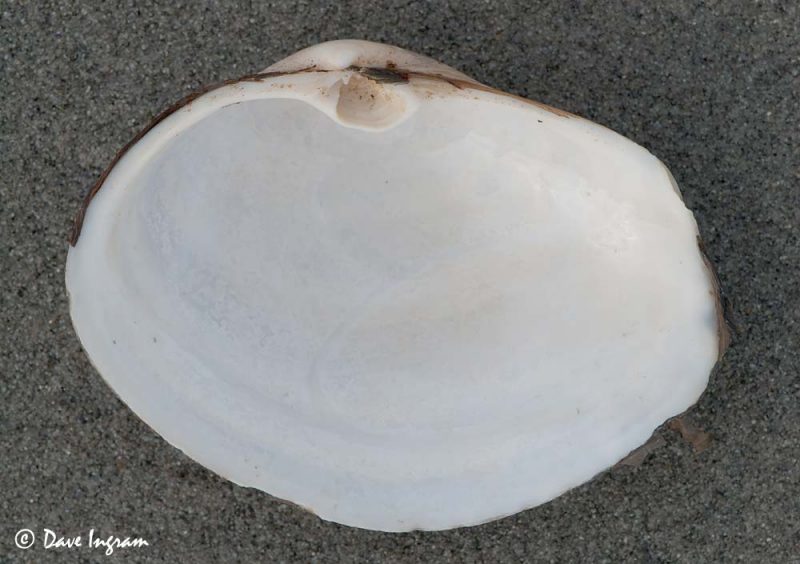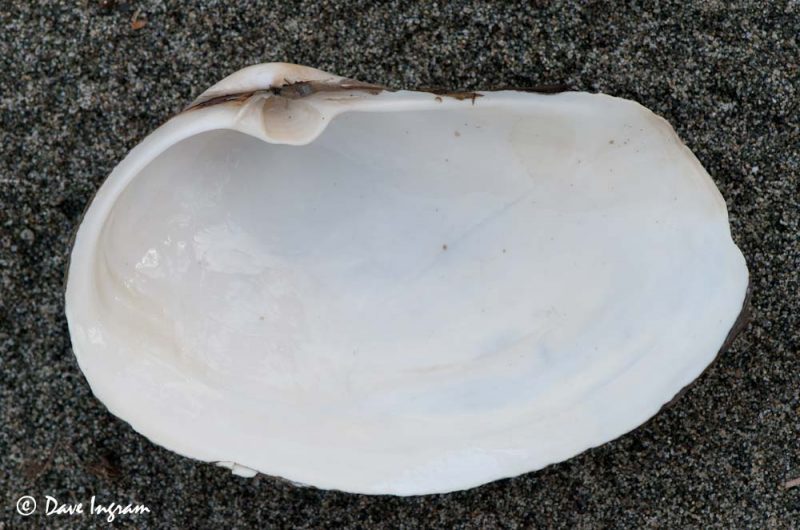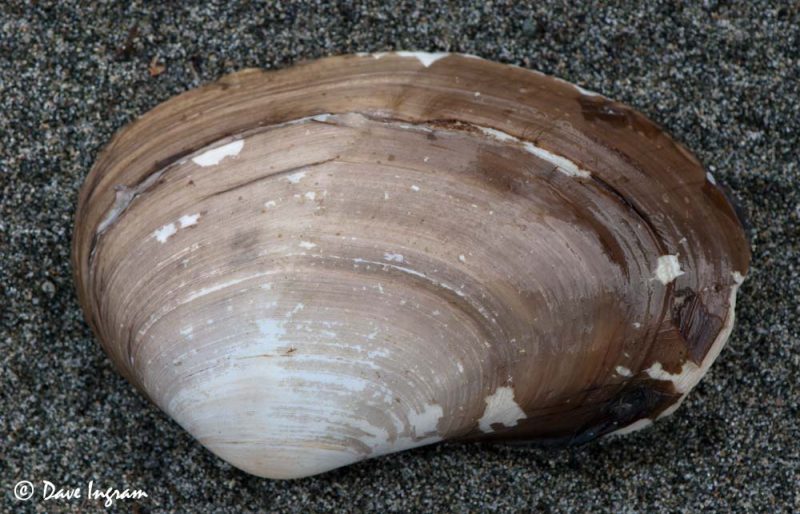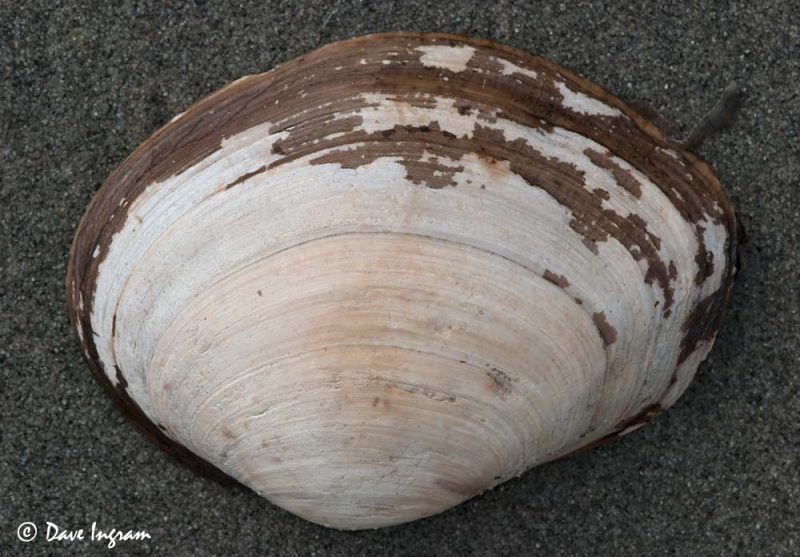In my last post I wrote about finding weird but fascinating Horse Clam siphons sticking out of the sand and trying to identify the species based on what could be seen on the surface. Fortunately it is a lot easier to separate the Fat Gaper (Tresus capax) from the Pacific Gaper (Tresus nuttallii) if you’ve got shells that you’ve found on the beach to compare.
At first glance, both of these species look pretty similar. Their shells are large and often covered with a peeling varnish-like skin called periostracum. With older shells the periostracum has worn away leaving the heavy white shell bare. Looking at the inside of the shell you’ll see a prominent “bowl” at the hinge of one of the valves.


Taking a closer look at the shapes of both of these species provides an opportunity to do some beach math with proportions. The Fat Gaper is generally more round/oval in shape. The length of the shell is about 1.5 times as long as it is high giving it a somewhat squat, heavy look. In comparison, the Pacific Gaper is more than 1.5 times as long as it is high which results in a more long, almost rectangular look.

The quality of the periostracum is different as well. With the Pacific Gaper, the thin brown “skin” covers most of the shell and has a shiny look to it that makes the shell look a little more fragile than the Fat Gaper. In contrast, there is often less periostracum on the shell of the Fat Gaper and the underlying shell colour is often less white than the Pacific Gaper.

Since these clams look very similar, using the scientific names might help to remember their features. Think of the fat Tresus capax as being the clam with the most “capacity” or room. While the thinner Pacific Gaper is named after Thomas Nuttall, you could associate the species name and the periostracum of Tresus nuttallii with the peeling skin of a peanut. Not perfect – let me know if you can think of a better way to remember which is which!
With a little practice you can tell these two different species of clams apart. The challenge is to keep the names straight in your mind!